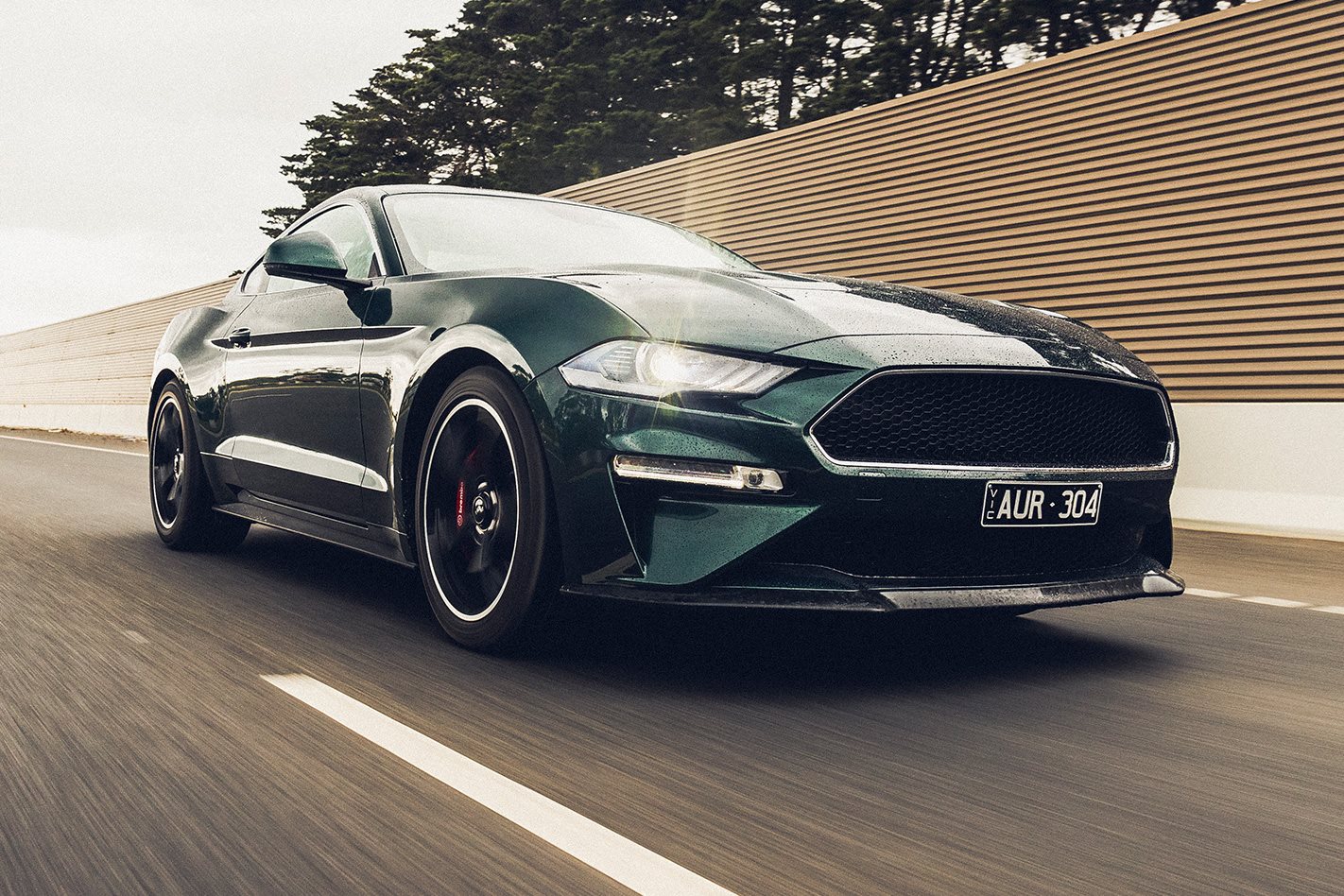ADMIT IT. If pressed, you’d struggle to describe the plot of Bullitt. We all know the car chase, but the rest of 1968’s fifth-highest grossing movie is, to most of us, a pretty hazy construct. If ever a movie was distorted by one sequence, Bullitt is it. Movie buffs will laud it as tautly written, spare and thrilling, drawing on influences from Japanese and French arthouse classics, yet it’s been seized on by petrolheads like us, who often find this cop procedural’s pace slow, the character development non-existent and the dialogue tedious.
But there, an hour and five in is 10 minutes and 53 seconds of cinematic gold that spawned the car we’re rolling in today. This is the third iteration of the Mustang Bullitt special edition, but this 50th birthday movie tribute is the first official import to Australia.
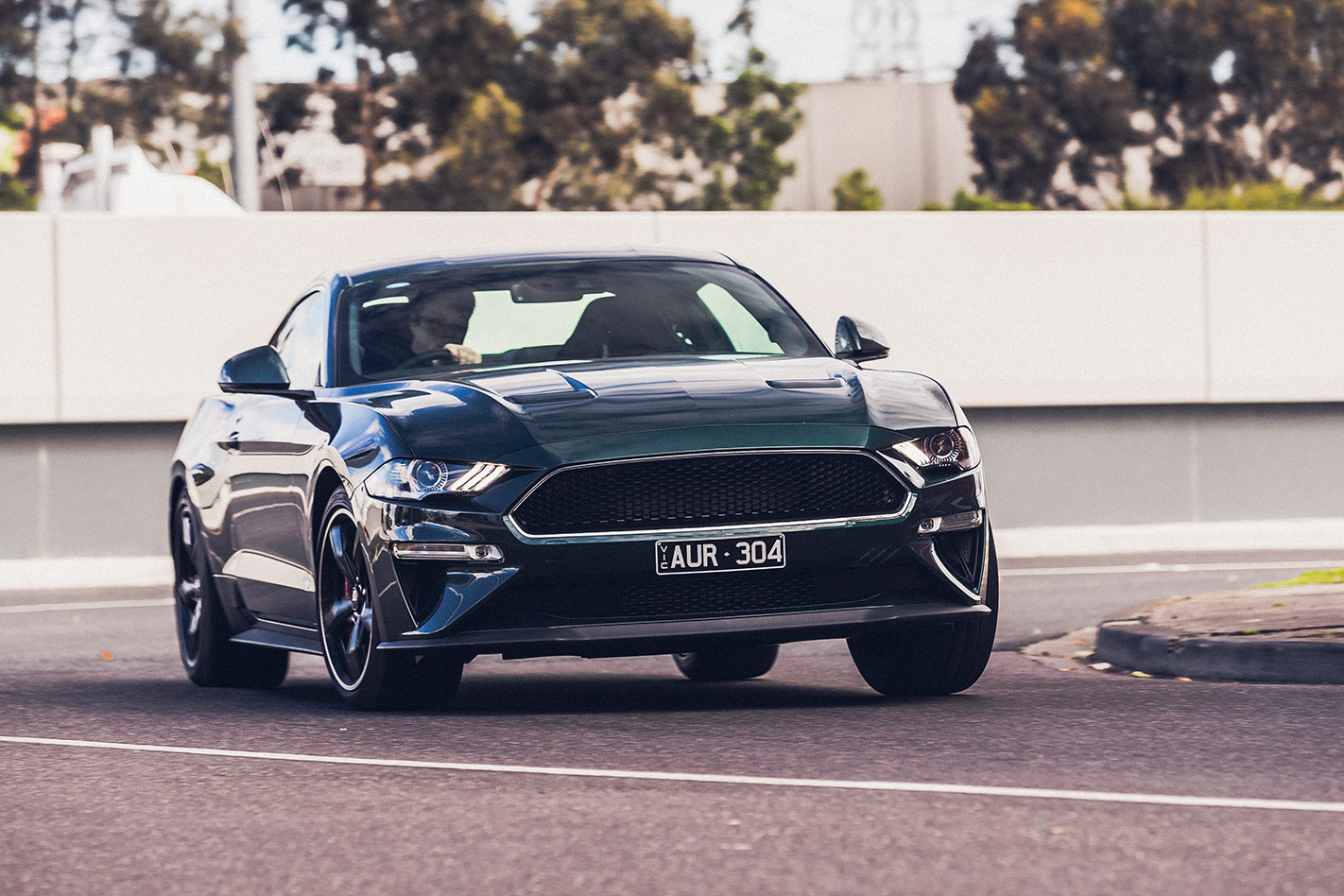
Initial orders suggest that we’re taking it to our hearts much as we did the original ’68 movie. Aussies contributed a fair slug of the movie’s $42.3m box office take, and nowhere was the Bullitt buzz stronger than at the almost 300 drive-in movie theatres dotted around the country. The ’60s were Australia’s drive-in heyday, when 20-acre plots of land on the outskirts of towns were cheap and plentiful.
The very first site opened in 1954 in Burwood, Victoria.
George Griffith Jnr, a manager for Hoyts, realised after a visit to the States that Australia possessed the four key ingredients to make drive-ins work: the English mother tongue, plentiful land, good weather and high car ownership. Unable to sell the concept to his employer, Griffith formed a syndicate and opened the Skyline in a natural amphitheatre in the Gardener Creek valley, the screen elevated on the other side of the creek to the field, removing the need to mount it on a tower. With its lake, steak house and illuminated kids playground, it opened on February 17th 1954, screening The Conquest Of Everest to a select preview audience. From that point on, the venue drew huge crowds, Hoyts soon swallowing its pride and buying out Griffith and his partners.
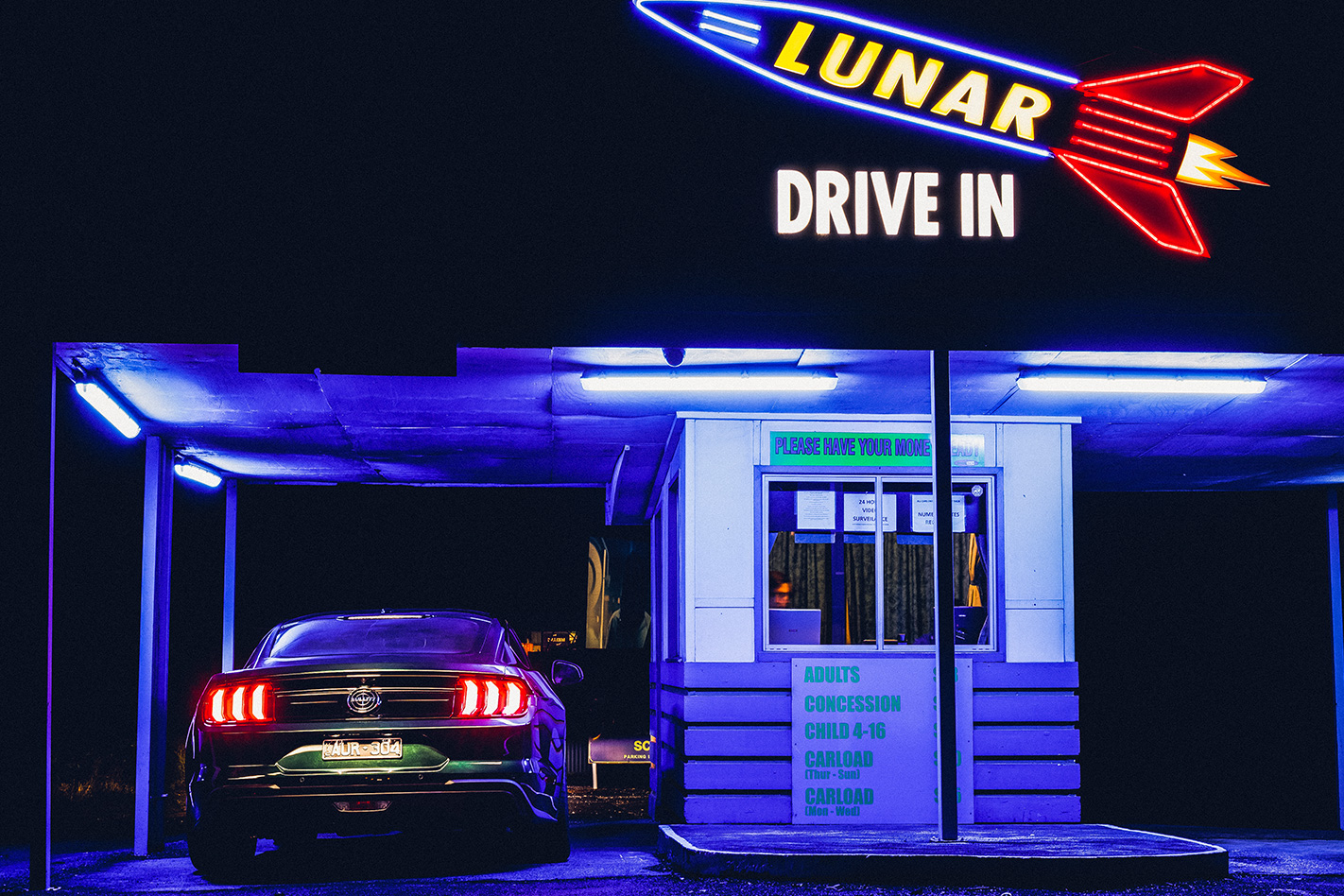
Bullitt was screened in drive-ins with a Warner Bros distribution deal, which includes the one we’re at, the Lunar Dandenong. Sadly it’s one of just three drive-ins still surviving in Victoria. The Lunar’s story is that of Jim Houlahan, who was commissioned to build a copy of the Skyline Burwood; the Maribyrnong Sunset becoming Melbourne’s second drive-in. A consortium of Dandenong business owners then wanted in on the drive-in craze and Jim’s next job was to take advantage of local Holden, Standard and Chrysler plants and create a drive-in on a 25-acre site. With a four-lane entrance and space for over 600 cars, this site opened in May 1956.
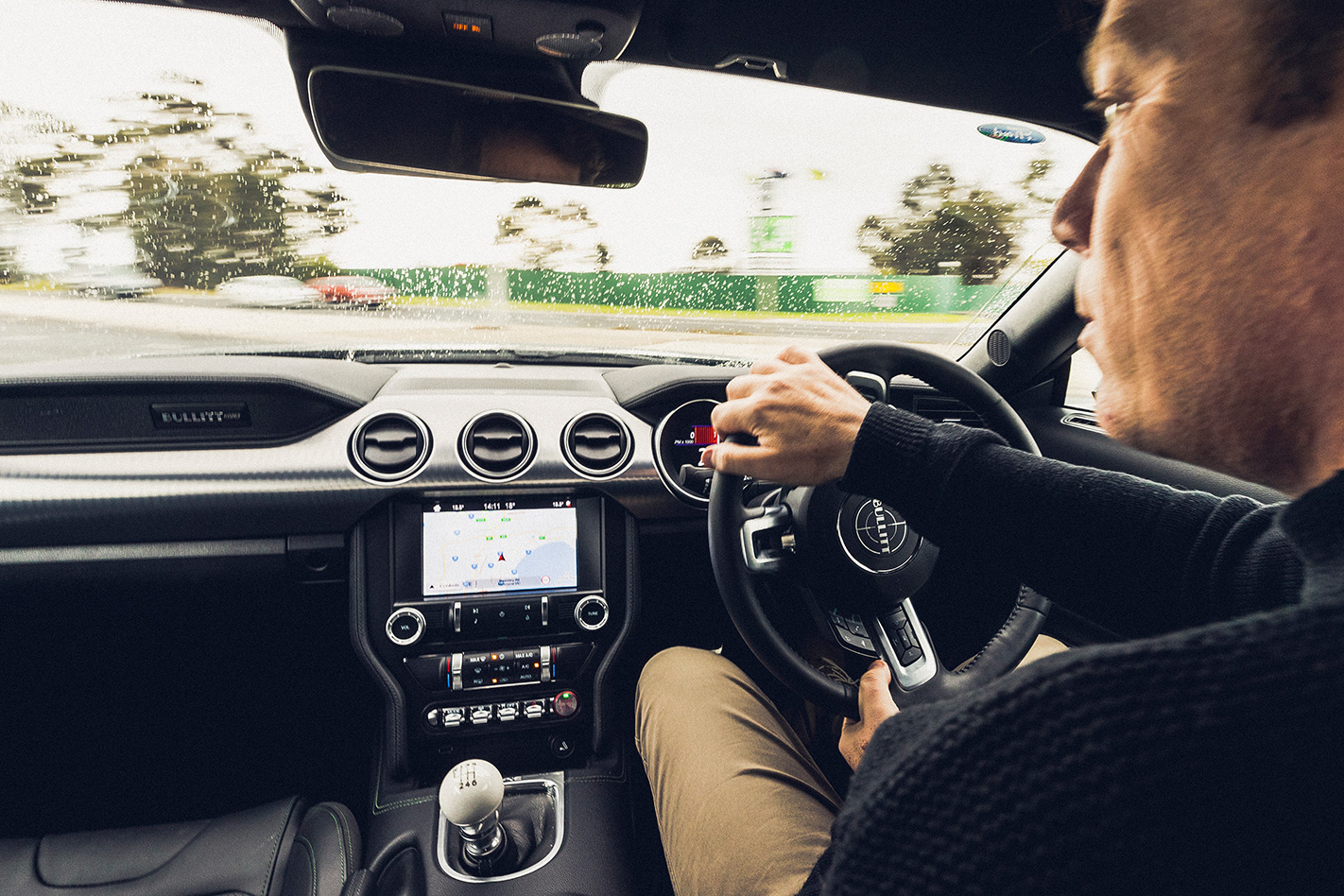
It closed in 1984, knocked out by a one-two of rising land values and the development of the VCR. Second-run movies and revival showings had long been the bread and butter of the drive in, affording families an inexpensive night out, but the prospect of an even cheaper night in proved seductive. Faced with declining profits, most drive-in owners succumbed to the advances of developers looking for suburban shopping centre sites. From these regional centres grew the multiplex cinema, a major factor in capping the drive-in revival.
There are only 20 permanent drive-ins left in Australia. I’m surprised to see that the clientele at Dandenong, which reopened in 2002, is predominantly hipster twentysomethings, rather than boomers sucking on the teat of dewy-eyed nostalgia, and business through the gates at the Lunar has grown 10 percent year on year for the past eight years. One thing hasn’t changed, though. A fair proportion still come to drive-ins because they love movies and love cars, and the Bullitt ’Stang receives its fair share of Instagram papping.
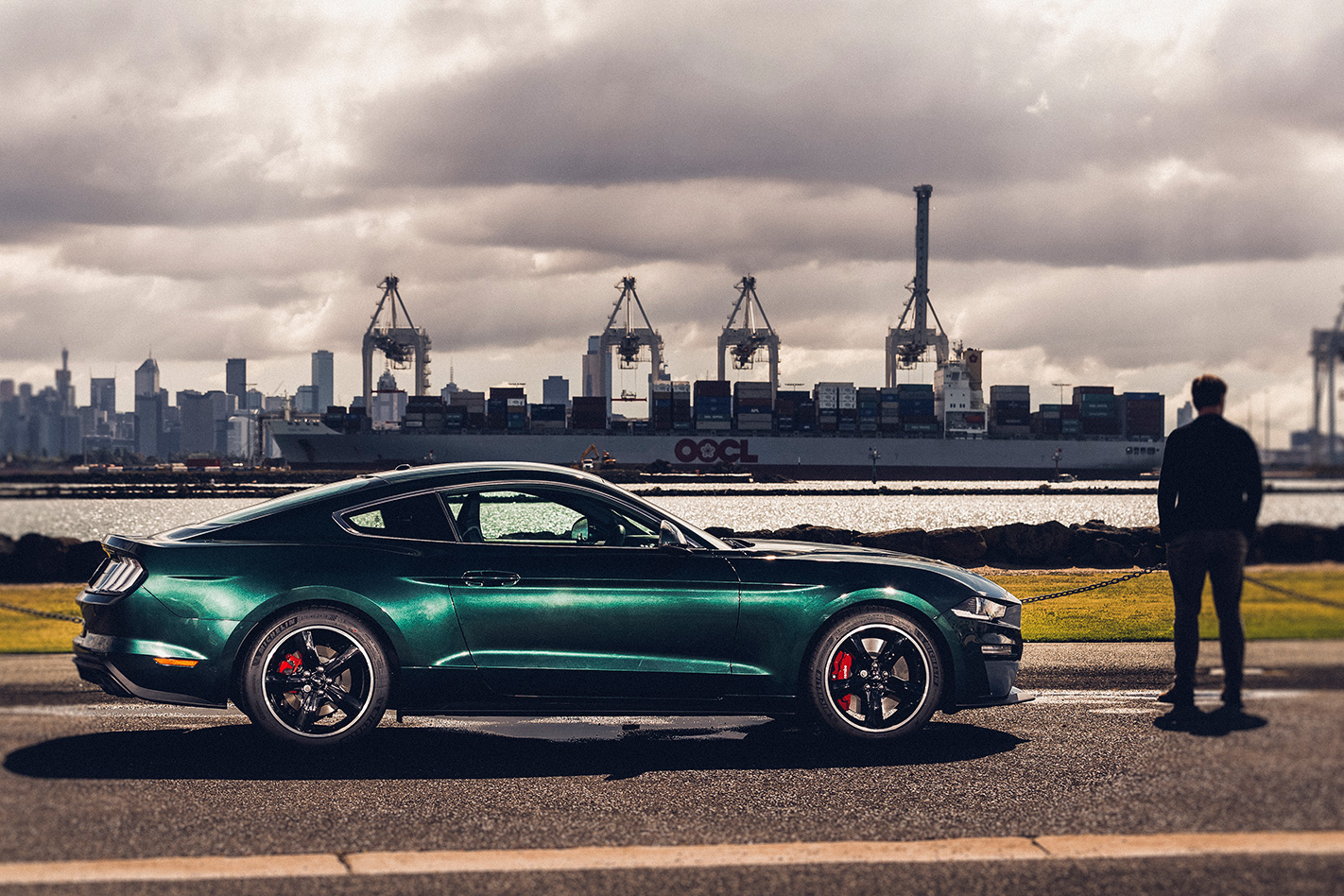
This is an easy car to be a bit cynical about. Were you of a more jaded bent, you’d probably think this was a dead horse not so much flogged as minced, but there’s a big-hearted enthusiasm to the Bullitt Mustang that’s impossible not to love. The aesthetic is spot-on, Ford only choosing to import to Australia in authentic Dark Highland Green, leaving the cloth-eared Shadow Black for the US market. With extra chrome, the deletion of the front grille pony and some low-key aluminium Torq-Thrust wheels, the Bullitt Mustang has to be one of the few cars that could be cosmetically improved by the addition of a few strategically positioned scuffs and dents.
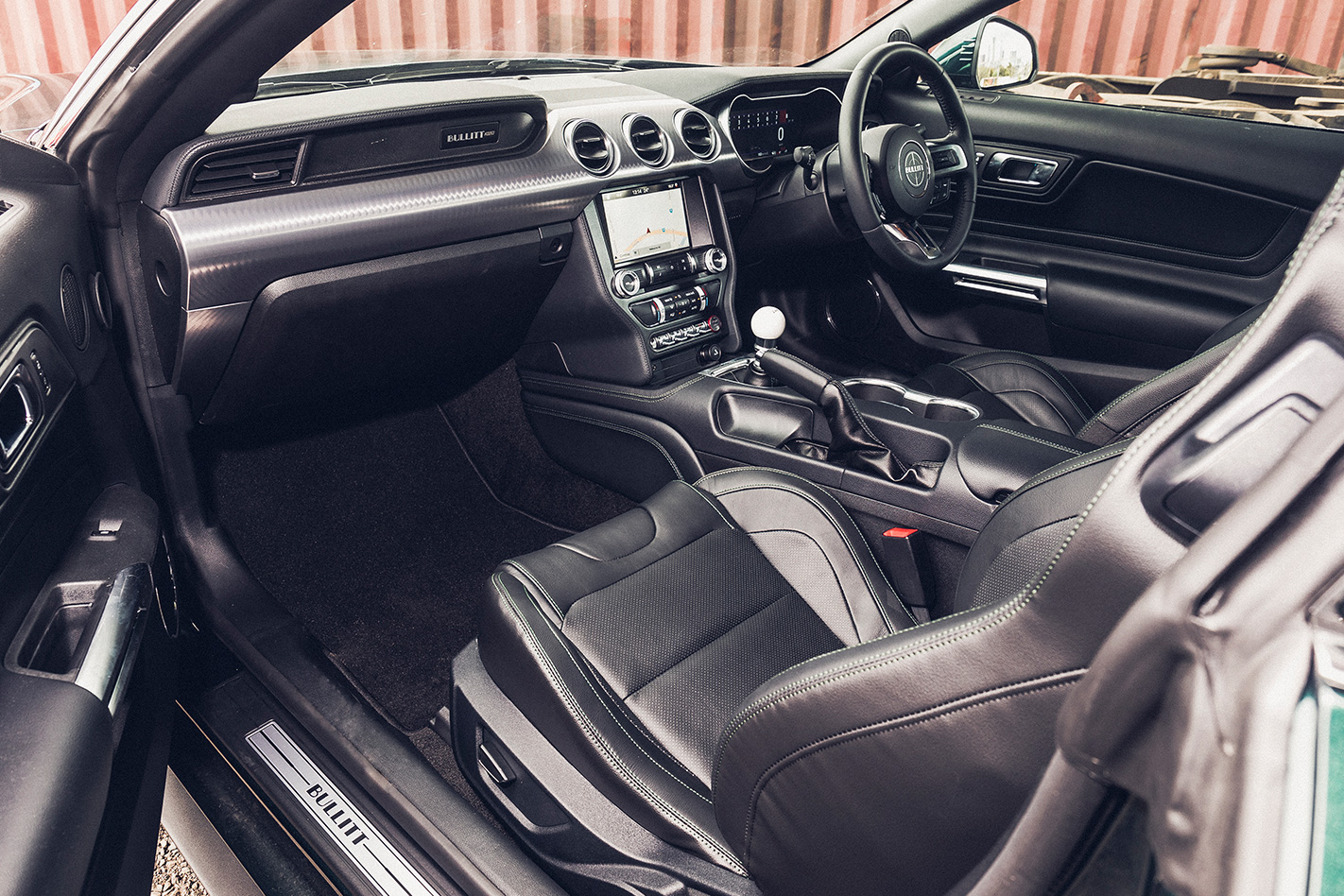
The gunsight graphic in the centre of the decklid is the only gauche touch, and I’d be looking to source an Ecoboost’s pony badge instead for understated cool. The cabin still feels authentically blue-collar despite the leather Recaros and milled aluminium inlays. Poke around and you’ll spot some ropey plastics and parts-bin light switches and, if you’re tall, the rear view mirror offers an excellent opportunity to inspect the rear bench squab. At $73,688, the Bullitt is $10,698 pricier than the GT Fastback manual on which it’s based, but given that only 700 are coming, it’s reasonable value. Ford has even managed to squeeze a few extra ponies from beneath the bonnet; peak outputs climbing to 345kW and 556Nm courtesy of an open air induction and Shelby Mustang GT350 intake manifold with 87mm throttle body, a Ford Racing air filter and a custom powertrain control module to make that little lot play nice.
Our schedule means that we need to sneak out of the drive-in a little early and there’s no really subtle way to do it. The retuned performance exhaust has little of the introvert about it, rippling sodas in cupholders like the big boy from Jurassic Park. However much fun it is to watch movies about cars, it always pales a little when you have the keys to the real deal. Maybe disc brakes and decent tyres contributed just as much to the death of the drive-in as video-cassette top-loaders and dodgy developers.
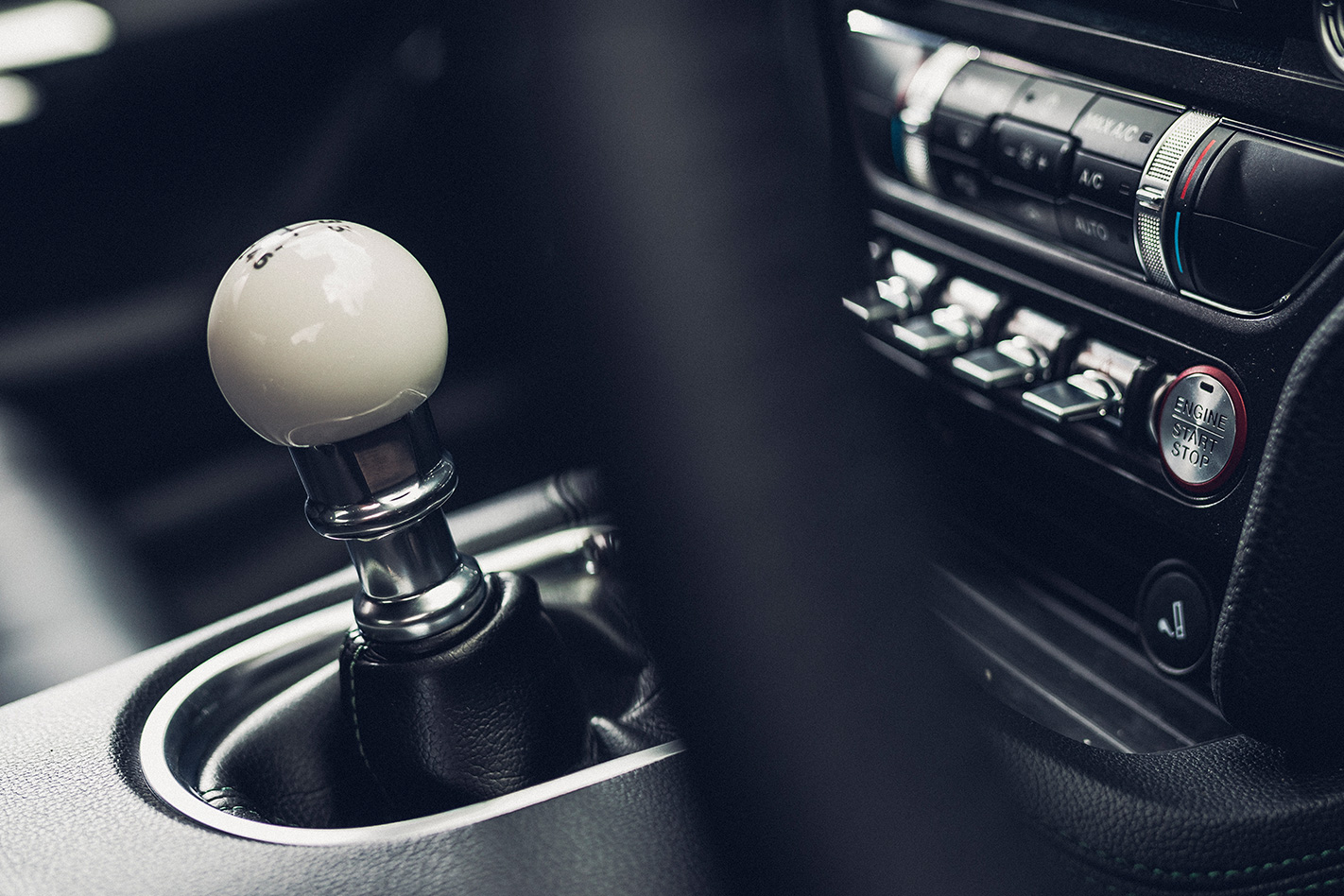
The cue ball gearknob in this Bullitt edition might be a throwback, but it’s absolutely key to the fun factor of this car. We’d driven to pick up the Ford in a manual Porsche 911 GT3 and, after a few kilometres, I’m wondering whether the Mustang actually has the sweeter transmission. In fact, I’m not wondering at all. I’m certain of it. It’s a more fluid action, one that you’ll palm around the gate just for the fun of feeling the deft springing, the seductive slip of the detents and the raucous rev-matching. The sensors for the latter are such that you can give the ball the sneakiest little double-tap to contact the next gear and you’ll get two enormous gales of revs, a cheat to emulate McQueen’s deft double-declutching. Of course, should you want to do the footwork yourself, you can switch the electronic help off and enjoy the near-perfect pedal placement.

Much has been made of McQueen’s contribution to the stunt driving in Bullitt, and while he was undoubtedly a handy steerer, most of the truly high- speed stuff was taken care of by stuntman Bud Ekins, who had previously doubled for McQueen for the climax of The Great Escape, where he jumped a Triumph 650 painted up as a side-valve Wehrmacht BMW over a four-metre barbed-wire fence. Ekins was always adamant that McQueen could have performed the jump himself and that he was also more than capable of the high-speed driving requirements for Bullitt.
10,000,000th Mustang to be built
Channel your inner Bud and you’ll find that this generation Bullitt Mustang likes being slid lazily around with the stability control nixed, but I’m not sure if I’d feel entirely comfortable flinging it sideways at the 120km/h-plus speeds Ekins managed in the movie. There’s a certain pitchiness to the suspension and a low-down gutsiness to the V8, the tweaked cam phasing giving the Bullitt an agreeably lumpy idle. It has the aura of an unreconstructed muscle car and so it proves, the Mustang feeling rock star up to about seven or eight-tenths, after which it can be bullied into behaviours a little less resolved. It would undoubtedly lack the ride height to tackle the jumps on San Francisco’s Taylor Street without divesting itself of most of its anterior plastics.
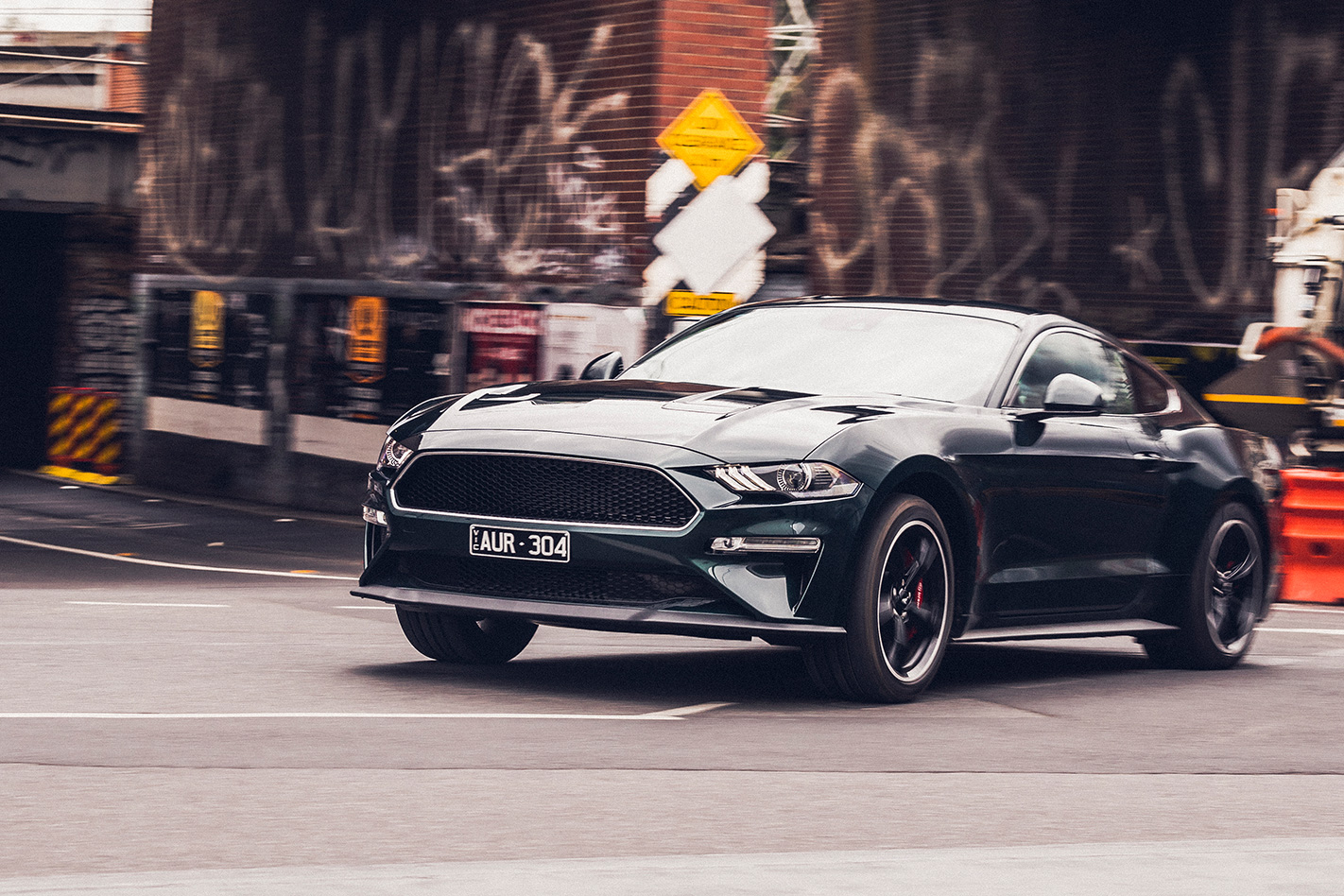
Unlike Bullitt’s impossibly schizophrenic location sequences around the Bay Area, our route is far more coherent: down from the northern end of Melbourne, home of the Village Drive-In at Coburg, to the Mornington Peninsula where the Dromana Drive-In is located, before looping back up to the Lunar at Dandenong. The Bullitt Mustang makes a fantastic urban sports car. It looks and sounds great, performs exceptionally at modest speeds, the instant torque will make the tyres chirrup and squeal at will and the ride on the adaptive suspension isn’t half bad. What’s more, the optional 1000-watt Bang & Olufsen stereo and bucket-sized cupholders are about perfect for the drive-in. Some will always prefer a bit of Netflix and chill but there’s room for a more retro experience. Your mileage may vary. Or, as Detective Frank Bullitt once noted, “You work your side of the street and I’ll work mine.”
Click through the gallery at the top of this story for more images of the 2019 Ford Mustang Bullitt by Ellen Dewar.


